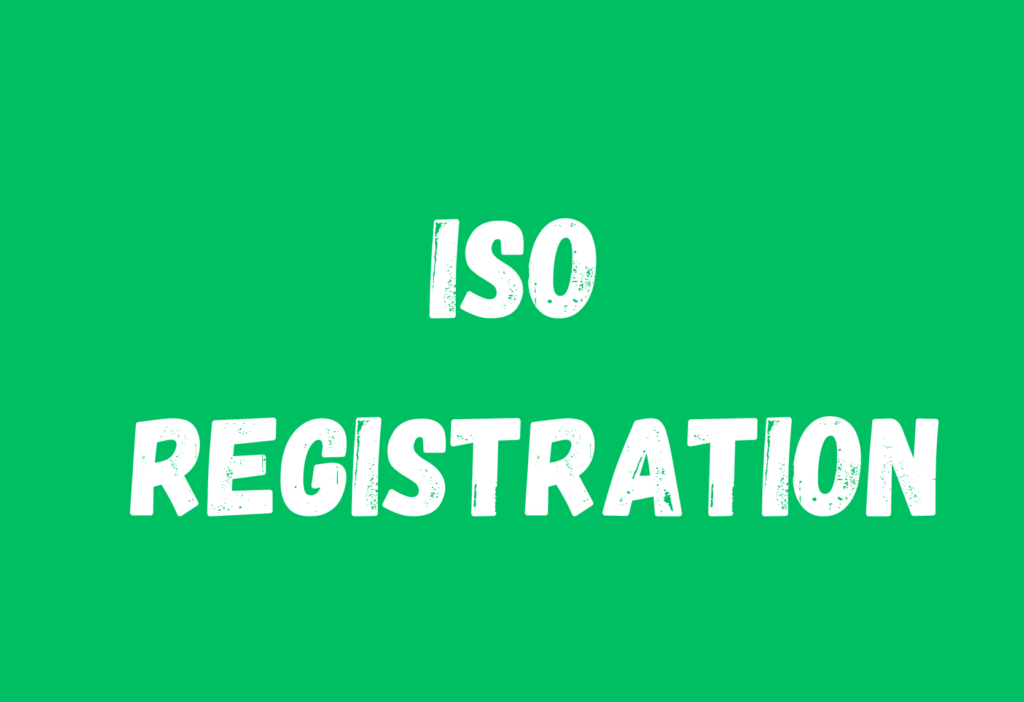ISO certification occupies an important place in professional standards and quality control. However, for many people, the mere mention of “ISO registration” can cause confusion and confusion. Don’t be afraid! Let’s unravel the mystery behind ISO registration in a simple way.
Want ISO Registration
What is ISO?
ISO stands for the International Organization for Standardization. It’s a non-governmental organization that units requirements to make sure the quality, protection, and performance of merchandise, offerings, and systems. These standards are identified globally and are designed to enhance customer delight and facilitate international change.

Understanding ISO Registration
ISO registration, also known as ISO certification, is the process by which a company gets certified for complying with ISO standards. Essentially, it’s a stamp of approval that demonstrates a company’s commitment to quality management practices.
Why ISO Registration?
Enhanced Credibility: ISO certification enhances a company’s credibility and reputation, signaling to customers, stakeholders, and partners that the organization is dedicated to quality and continuous improvement.
Access to Markets: ISO certification can open doors to new markets, especially in industries where certification is a prerequisite for doing business.
Improved Processes: The ISO certification process encourages companies to streamline their processes, identify inefficiencies, and implement best practices, leading to improved efficiency and cost savings.
Types of ISO Certifications
ISO offers a wide range of standards covering various aspects of business operations. Some of the most common ISO certifications include:
- ISO 9001: Quality Management System (QMS)
- ISO 14001: Environmental Management System (EMS)
- ISO 27001: Information Security Management System (ISMS)
- ISO 45001: Occupational Health and Safety Management System (OHSMS)
The ISO Registration Process
Gap Analysis: Assess your current processes against the requirements of the relevant ISO standard to identify areas for improvement.
Documentation: Develop documentation, including policies, procedures, and work instructions, to align with ISO standards.
Implementation: Implement the necessary changes to meet the requirements of the ISO standard.
Internal Audit: Conduct internal audits to ensure compliance and identify any non-conformities that need to be addressed.
Management Review: Review the effectiveness of the implemented systems and processes at the management level.
Certification Audit: Engage a certification body to conduct a formal audit of your management system to determine compliance with ISO standards.
Certification: Upon successful completion of the audit, the certification body issues the ISO certificate, which is typically valid for a certain period, subject to surveillance audits.
Conclusion
ISO registration may seem daunting at first glance, but with proper understanding and preparation, it can be a valuable investment for businesses of all sizes. By obtaining ISO certification, companies can enhance their reputation, improve processes, and gain a competitive edge in the global marketplace. So, if you’re considering ISO certification for your organization, embrace the journey towards excellence and quality management.
Want ISO Registration ?? Contact Us

Can you write more about it? Your articles are always helpful to me. Thank you!
Thank you for writing this post!
Thank you for writing this post. I like the subject too.
A person essentially help to make seriously posts I would state. This is the very first time I frequented your web page and thus far? I amazed with the research you made to make this particular publish amazing. Wonderful job!
Interesting blog! Is your theme custom made or did you download it from somewhere? A design like yours with a few simple adjustements would really make my blog jump out. Please let me know where you got your design. Many thanks
What’s up to every one, the contents existing at this site are truly awesome for people knowledge, well, keep up the good work fellows.
Good write-up, I抦 normal visitor of one抯 web site, maintain up the nice operate, and It is going to be a regular visitor for a long time.
Hey there, You have done a great job. I抣l certainly digg it and personally recommend to my friends. I am sure they’ll be benefited from this site.
“My brother suggested I would possibly like this web site. He was once totally right. This put up actually made my day. You cann’t imagine simply how so much time I had spent for this information! Thanks!”
You really make it seem so easy with your presentation but I find this topic to be actually something that I think I would never understand. It seems too complicated and very broad for me. I am looking forward for your next post, I will try to get the hang of it!